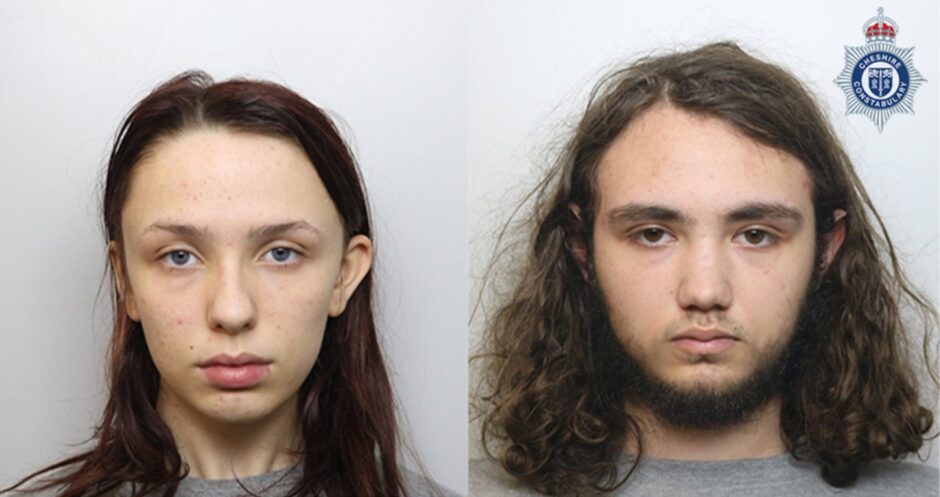The mother of murdered teenager Brianna Ghey has said she is open to speaking to the mother of one of her daughter’s killers.
Scarlett Jenkinson and Eddie Ratcliffe were aged just 15 when they stabbed Brianna Ghey to death with a hunting knife.
Last week, they were both sentenced to life in prison.
In an emotional interview given after the sentence was announced, Esther Ghey said she wanted the mother of Scarlett Jenkinson to know that she didn’t blame her for what her daughter did.
“I also want her to know that – I understand how difficult being a parent is, in this current day and age, with technology and phones and the internet, and how hard it is to actually monitor what your child is on,” she said.
This generous comment came after a trial which revealed disturbing details about the time leading up to Brianna’s murder, including the fact that Jenkinson had watched gruesome videos of violence and torture on the dark web.
The killers were found to have plotted Brianna’s murder in conversations they had on messaging apps.
Given the role technology played in the planning of her daughter’s murder, Esther Ghey has announced that she is launching a petition which will call on the government to stop children having access to social media on smartphones.
She wants to see a clear divide between the devices that are available to adults, and those that are allowed for children. In addition to this, she is asking that technology companies introduce measures which would flag when a child searches for inappropriate material online.
Keeping children safe as they navigate the digital world is something that all parents have to grapple with.
Many parents will be horrified at the idea that their own child could consume harmful, violent content without their knowledge.
Esther Ghey’s compassion towards the mother of her child’s killer is admirable. It is also indicative of the universality of the problem: how do you properly monitor your child’s activity in a landscape as vast as the internet?
According to my soon-to-be 10 year old, she is one of the only children in her class that doesn’t have a phone.
While I suspect there is an element of hyperbole at play there, it is true that many of her classmates have smartphones of their own.
They are now a feature of birthday parties and playdates, as the have-nots crowd around the lucky phone-owner to watch the latest viral dancing trend on TikTok, or to snap a pouting group shot.
The thing is, it’s not even the phone itself that is the issue. Having the ability to contact your child when they’re not with you is something that many parents would find both convenient and reassuring. It’s the add-ons that come with having a phone that are a cause for concern.
We all know the dangers of young people being on social media and the links it has to body insecurities and online bullying.
‘Technology companies need to step up’
Instant messaging apps are a disaster waiting to happen when in the hands of impulsive, socially immature young people.
My daughter’s school sends out a semi-regular reminder to parents to monitor their child’s use of such apps, because of incidents online that have spilled over into the school day.
We’re all trying to do our best. We don’t want our children to be singled-out as being the weird analogue kid in a digital world.
But we also want to keep them safe.
And it’s clear that technology companies need to step up and help make the spaces they host safer for all the young people that dwell there.
Esther Ghey’s petition is ambitious in what it is asking of government and technology companies. Even if she doesn’t quite reach her goal, she has sparked a necessary and important conversation about online safety. It’s one that all parents should be following closely.
The puppy diaries
Our puppy reached two exciting new milestones this week.
His yapping, high-pitched bark has now developed into something altogether more manly.
He has been trying out his new woof whenever something annoys him.
Which, given his Victor Meldrew-like temperament, is often.
He has also lost at least one of his baby teeth. We can’t be sure of the exact number because it’s never wise to prise open the jaws of an teething, crabbit puppy.
But there are definite gaps. The last time he chomped down on my hand he left far fewer indents than usual.
Google tells me that this means my baby boy is growing up and will soon become the relaxed, easy-going dog that I have always dreamed of.
Until then, I’ve got teething chews on rotation in the freezer, ice cubs scattered across my kitchen floor and a puppy that is only calm when receiving a full-body massage.




Conversation